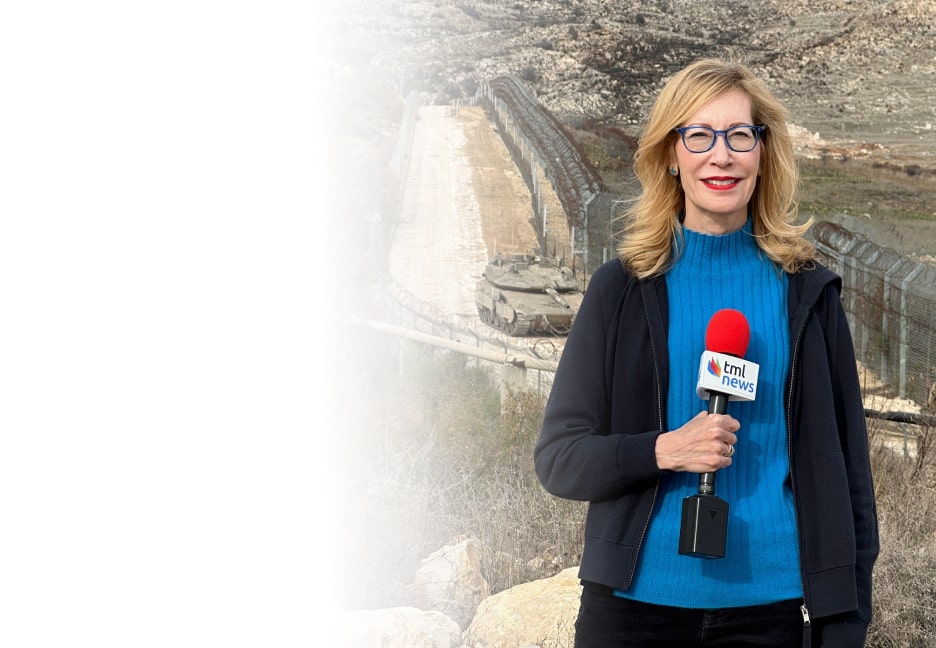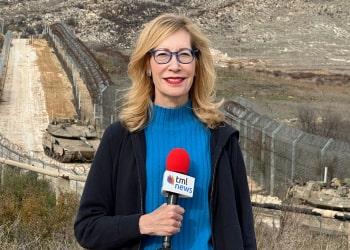 |
(Dudi Saad/G.F. Photos)
It began in November 2004, when some one thousand residents of the eastern Jerusalem neighborhood Al-Bustan received letters from the municipality saying their homes are illegal and that the city is pursuing legal recourse. Residents understood without hesitation that their houses faced demolition. Although residents reacted with fear or anger, there was little or no surprise. Most of Al-Bustan’s Israeli-Arab residents have, indeed, built their houses without municipal permits and readily admit that this is the case. So rather than arguing the letter of the law, Al-Bustan’s homeowners instead defend their disregard for it by arguing necessity and reality – all the time maintaining that their reasoning is more sound than statute.
“The reason we built with no permit, was the population growth. We applied to the municipality to let us have permits, but it always turned us down,” says Al-Bustan resident Fahri Abu Diab. Another resident of the neighborhood, Muhammad Badran, elaborates, explaining that “It is common with us [Muslims] that the extended family lives together,” [thus, necessitating the creation of additional living space].
 |
Fahri Abu Diab (Dudi Saad/G.F. Photos)
The Jerusalem municipality, however, offers more than proof that the individual buildings – about half of those comprising Al-Bustan – failed to comply with local regulations. It offers compelling evidence that the neighborhood is built on land that has been reserved for public use without interruption regardless of who controlled it at any given time: since 1918 under the British Mandate, through Jordanian rule from 1947 until 1967, and Israel until now. All controlling powers had recognized it as a historical tract where the very origins of ancient Jerusalem can be traced. Most of the buildings in question appeared only in the 1990s, when they were built by Palestinians who moved to Jerusalem from Hebron.
“If you look at documents from hundreds of years ago, you can see that this area was always an open space,” explains Jerusalem’s City Engineer Uri Sheetrit. “The British Mandate which ruled this country and this city from 1918 to 1947 designated the said area as a public open space, right from the beginning. The Jordanians, after they gained control over the area, reinstated the British regional zoning and fixed this area as a public open space. The Israelis after 1967, with the unification of the city, created a plan called IM6 which reinstated this area as a public open space.” Sheetrit explains that, “In 1973, the Israelis prepared a detailed plan for this area which again followed the previous plan and fixed this area as a public open space, and as part of the national park system… around the Old City. Since the beginning of history up until ten years ago, this area was an open space.”
 |
Uri Sheetrit (Dudi Saad/G.F. Photos)
This holiday season, give to:
Truth and understanding
The Media Line's intrepid correspondents are in Israel, Gaza, Lebanon, Syria and Pakistan providing first-person reporting.
They all said they cover it.
We see it.
We report with just one agenda: the truth.


Aerial photographs of the neighborhood taken in 1992, and again in 2002, back up Sheetrit’s claim. An area of dense foliage in the 1992 photograph marks the exact place on which most of Al-Bustan would later be built, leaving no doubt that for the most part, the neighborhood’s history began only after that year. So the residents of at least half of the buildings cited face a seemingly insurmountable legal obstacle: illegal buildings erected by non-locals who by any reckoning would not have standing to construct a dwelling in that location. When asked about the other half: the residents who justify their building because of necessity due to the growth of families, Sheetrit responded with an analogy: “Could you imagine a situation whereby people who are living near [London’s] Hyde Park build houses inside the park after their families grew? It does not seem reasonable.” So, according to Sheetrit, “that is not an argument.”
 |
Al-Bustan neighborhood – 1992
 |
Al-Bustan neighborhood – 2002
But to the citizens of Al-Bustan, Sheetrit’s arguments are no comfort. Having failed in their attempts to convince the municipality to rescind its decision, they decided to turn to the court of public opinion. Thus began a media campaign that started with a small article in a local Jerusalem paper and became a feature story in the mass-circulation daily Haaretz on its way to being a cause-célèbre in world media.
Like bees drawn to honey, it was at this point that Palestinian and Israeli politicians entered the picture. Jamal Zahalka, an Arab member of Knesset, Israel’s parliament, called it a “declaration of war on the Palestinians of East Jerusalem.” ‘Saib ‘Ariqat, the Palestinian Authority’s chief negotiator and one of its most recognizable faces, demanded that Israel “give peace a chance” by halting action against the buildings.
But world media sensed an imbalance in the story and began questioning all sides in the affair, accusing Arabic media of presenting only that of Al-Bustan residents. “I received one call from [Arabic language satellite TV station] Al-Jazeera, but other than that none of the Arabic media tried to hear our side of the story,” complains Sheetrit. Al-Jazeera told The Media Line (TML) that Sheetrit’s response came “only” two days after they broadcast the initial report. “When we do the second report, we’ll surely interview him,” an Al-Jazeera spokesman assured TML. But other televisions stations, such as Al-‘Arabiyya, had no such plans to do so. “It is a humanitarian story,” a source at the station told TML, “so we didn’t want to interview officials.” Asked whether ‘Ariqat qualified as an “official,” Al-‘Arabiyya decided that, “In the next report we’ll also interview Sheetrit.”
Yet, as is often the case in Mideast reporting, the snowball grew as it rolled down Al-Bustan’s slopes. Claims made by various “experts” and also by some of the residents, suggested a nefarious politicial agenda lurking behind the municipality’s initiative: that demolishing a neighborhood close to Al-Aq’sa Mosque further prepares the Israelis to lay siege from all sides in order to destroy the mosque; and that the issue serves to divert world attention from Gaza to Jerusalem as Israel’s planned unilateral pullout from the Gaza Strip draws near.
Arabic media sources repeated these claims, but failed to address the question of regional repercussions harmful to both sides if the mosque was, indeed, to be destroyed. When asked about these arguments, Sheetrit suggested that Israel has had ample time to destroy the mosque, the first opportunity having been during the 1967 War in which it gained control over the Old City of Jerusalem. Regarding the second argument, Sheetrit says the municipalty began discussing the issue long before the withdrawal from Gaza was even conceived.
Notwithstanding issues of journalistic ethics and the quality of reporting, the media attention is arguably showing signs of success where legal efforts have failed. Jerusalem Mayor Uri Lupolianski appeared to take a giant step in distancing himself from the brouhaha when on June 7 he announced that contrary to information circulating, “the Jerusalem Municipality does not intend to issue any administrative orders against the houses built in ‘King’s Garden’ [the Israeli designation for Al-Bustan].” Lupolianski’s semantics, however, offer more protection to his reputation than to Al-Bustan’s residents. “Administrative orders” are those signed by the mayor himself. Motti Levy, the mayor’s adviser for religious communities, brought the picture into focus when he insisted that “this is [now] out of our reach.” What he meant is that in refusing to sign administrative orders, Lupolianski is now cloaked in plausible deniability if – or when – the court orders the houses to be demolished. “But there is much room for optimism,” Levy added, explaining that the mayor’s decision to establish a team to check the possibility of cooperation with the residents, was a clear move forward and harbinger of hope.
 |
Al-Bustan (Dudi Saad/G.F. Photos)
More significantly, in late June, the municipality formally put the demolitions on hold while talks began with representatives of Al-Bustan. But residents are not necessarily buoyed by the development.
Initial meetings between the municipality and the neighborhood’s representatives began in mid-June, but so far there is no optimism to report on the residents’ side. “We offered to give the municipality a written commitment from all of us, stating that from now on we won’t build any other buildings here. In return, we asked for a commitment from the municipality not to demolish any of our homes while talks continue, but they refused,” said Fahri Abu Diab.
“People here feel much anger, mainly because they don’t know what their future and the future of their women and children will look like,” added Abu Diab. He concluded by saying that, “It will be the hardest moment we face in our lives if a bulldozer will come to demolish our houses. But we put our trust in God and with men of reason, hoping a solution will come.”